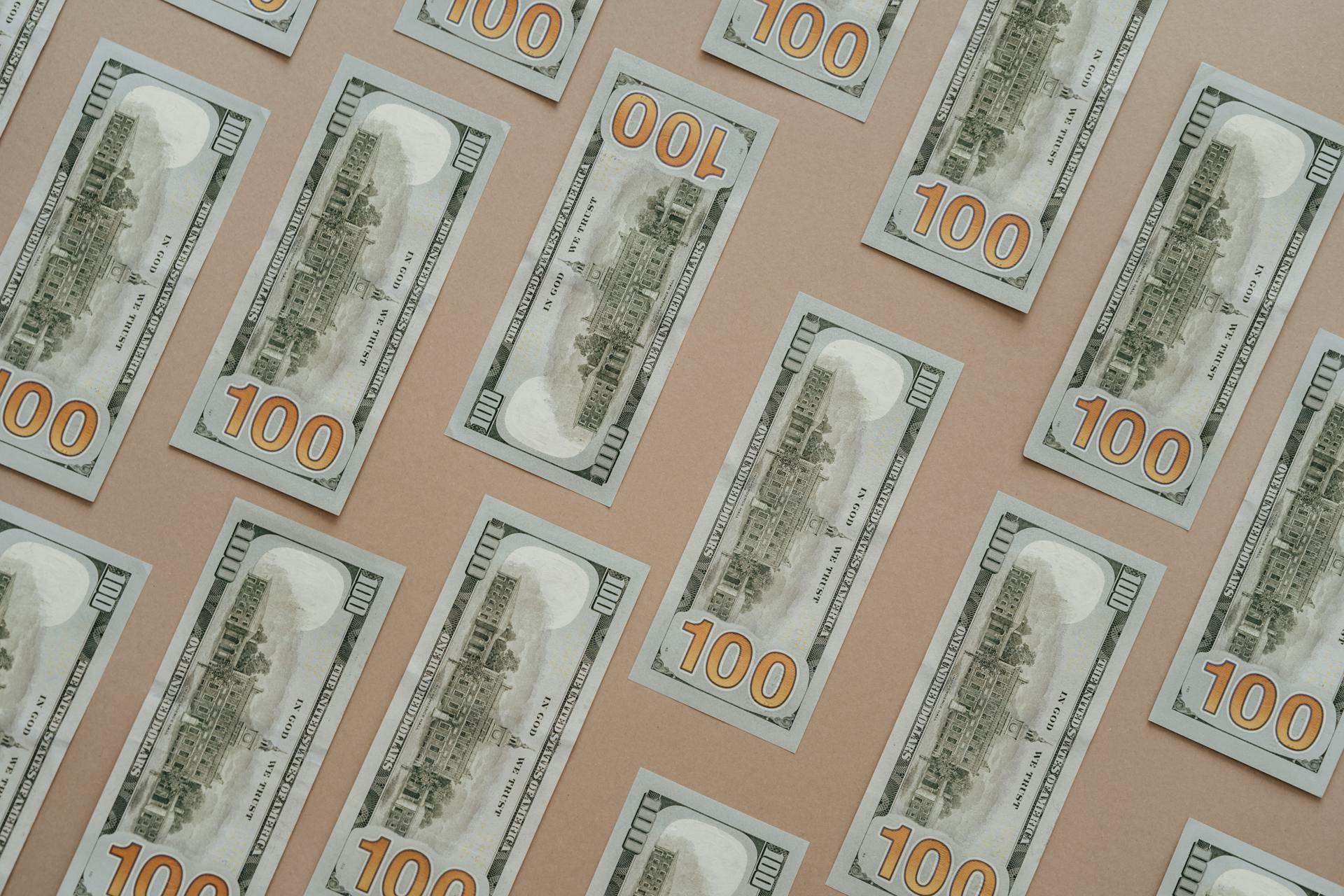
If you're considering taking out a loan, it's essential to understand how interest accrues and what to expect from your payments.
Most types of loans, such as personal loans and credit card debt, accrue interest on the outstanding balance. This means that if you don't pay off the principal amount, you'll be charged interest on the remaining balance.
The interest rate on these loans can vary greatly, with some credit cards charging as high as 30% interest. This can lead to a significant increase in the total amount you owe over time.
As you make payments, the interest will be applied to the remaining balance, and you'll be paying off both the principal and the interest.
Interest and Payments
Interest starts accruing immediately on unsubsidized student loans, even while you're still in school. This means your loan balance will grow faster if you don't make payments or pay the interest.
The interest rate on unsubsidized loans can vary, but it's typically higher than subsidized loans. For example, at a 6.00% interest rate, the monthly payment on a $4,500 loan would be $50.00, but at a 6.80% interest rate, it would be $51.79.
Intriguing read: What's the Difference between Subsidized Loan and Unsubsidized Loan
You have the option to start paying down the loan or pay the interest as soon as possible to avoid dealing with an overwhelming loan balance after you graduate. This can make a big difference in the long run.
Here's a breakdown of the estimated monthly payments for different loan amounts and interest rates:
The interest rates and estimated monthly payments will vary depending on the loan amount and interest rate.
Student Loan Options
Subsidized student loans are a type of loan that allows you to borrow money with the promise of paying it back over time with interest.
The interest on subsidized loans doesn't start accruing until after you've graduated or dropped below half-time enrollment.
The U.S. Department of Education pays the interest on your loan while you're still in school, which is a huge perk.
After graduation, you typically get a six-month grace period where you won't have to make any principal or interest payments.
Subsidized loans are only available to undergraduate students and typically carry a slightly lower interest compared to other loan types.
First-year undergraduates can only borrow up to $3,500 in subsidized loans, while second-year students can borrow up to $4,500 and third-year students are limited to $5,500.
If you're financially unable to begin payments, you can request a personal forbearance or deferment period or set up an income-driven repayment plan with your student loan servicer.
Interest Accrual
Interest on subsidized loans doesn't accrue while a borrower is in school at least half-time or during a six-month grace period after leaving school. The U.S. Department of Education pays the interest on subsidized loans in these instances.
Unlike subsidized loans, interest on unsubsidized loans starts accruing immediately upon disbursement. This makes unsubsidized loans more expensive.
About 30.7 million people have an unsubsidized loan, with an average balance of about $19,000, according to the Education Department.
If this caught your attention, see: Do Unsubsidized Loans Accrue Interest While in Grad School
Federal Direct Loan
Federal Direct Loans can accrue interest in two different ways, depending on the type of loan and the student's enrollment status. A Subsidized Loan does not accrue interest prior to repayment or during authorized periods of deferment.
If you have a Subsidized Loan, you won't have to worry about paying interest while you're in school or during your grace period. However, if you have an Unsubsidized Loan, interest will start accruing immediately from the time the loan is disbursed until it's paid in full.
The interest on an Unsubsidized Loan can be paid in full or just the interest can be paid while you're in school and during your grace and deferment periods. This can help you avoid adding more money to the principal amount of the loan.
Here are the key facts about interest accrual on Federal Direct Loans:
Repayment of the loan principal begins six months after you graduate, withdraw, or drop below half-time enrollment status, regardless of the loan type.
Decide Your Payment Timeline
There are approximately 43.5 million federal student loan borrowers in the U.S.
The number of borrowers is staggering, but it's essential to understand your loan terms to make informed decisions about your payments.
You need to decide how quickly you can begin making payments, which can affect your interest accrual.
For many, the pressure to start paying off loans can be overwhelming, but having a clear plan can make a big difference.
The Department of Education's 2022 data highlights the importance of understanding your loan options, including subsidized and unsubsidized loans.
By choosing the right loan type, you can set yourself up for success and avoid unnecessary interest accrual.
How Interest Accrues
Interest accrues on loans in a way that can affect the overall cost of borrowing. The U.S. Department of Education pays the interest on subsidized loans during periods of deferment or grace periods after leaving school.
Subsidized loans don't accrue interest while a borrower is in school at least half-time or during a six-month grace period after leaving school. This protection isn't available for Direct Unsubsidized Loans, which start accruing interest immediately upon disbursement.
Curious to learn more? Check out: Does Interest Accrue during Forbearance
About 30.7 million people have an unsubsidized loan, with an average balance of about $19,000. Unpaid interest on unsubsidized loans may "capitalize" after a deferment, adding to the loan's principal balance.
Interest accrues on unsubsidized loans even during deferments or grace periods, making this debt more expensive. This can lead to higher future interest payments.
Here's a comparison of subsidized and unsubsidized loans:
Payment and Impact
There are approximately 43.5 million federal student loan borrowers in the U.S.
Understanding the payment terms of your student loan is crucial to managing your debt. The Department of Education reports that there are 43.5 million federal student loan borrowers in the U.S.
You need to decide how quickly you can begin making payments. This decision can significantly impact your financial situation.
The number of federal student loan borrowers is staggering, with 43.5 million individuals relying on these loans to fund their education. This highlights the importance of making informed decisions about your loan options.
Check this out: Which Federal Loan Servicer Should I Choose for Consolidation
Frequently Asked Questions
Which loan type does not accrue interest?
Subsidized Loans do not accrue interest while you're in school at least half-time or during deferment periods. This means you won't be charged interest on your loan while you're actively pursuing your education.
Sources
- https://californiacollege.asu.edu/admissions/financial-aid/types/federal-loans
- https://www.lclark.edu/offices/financial_aid/loans/direct/
- https://www.cnbc.com/select/subsidized-loans-vs-unsubsidized-loans/
- https://financialaid.uiowa.edu/types-aid/loans/graduate-and-professional-federal-unsubsidized-loan
- https://www.cnbc.com/2023/08/31/student-loan-interest-resumes-how-subsidized-unsubsidized-loans-work.html
Featured Images: pexels.com


